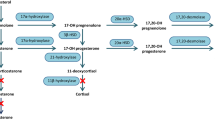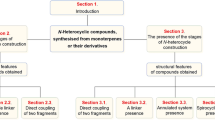Summary
5-hydroxytryptamine was recently isolated from the bark ofHippophae rhamnoides by G. P. Men'shikov and M. F. Petrova. The results of investigation of the action of the hydrochloride of the alkaloid upon the organism and tumors of mice and rats are presented. The preparation was named hippophain. The antitumor effect of hippophain is characterized by a wide range of action, the preparation inhibiting the growth of 7 out of 9 animal tumors (various types). However, the tumors do not resolve completely. Hippophain exercised no antitumor effect when administered per os.
The side effects of the preparation are connected with action upon the cardiovascular and respiratory systems.
The effects of a large dose of the preparation (20 mg/kg) upon hemopoiesis was studied during a 2-week treatment of sarcoma 45.
A moderate leukocytosis in the peripheral blood was observed under the action of hippophain. The absolute number of neutrophils per 1 mm3 of the blood increases by 70% in comparison with the initial level (without any shift to the left) whereas the number of lymphocytes is slightly reduced.
Similar content being viewed by others
Literature Cited
P. S. Massagetov, Zhur. Obshch. Khimii16, 1, 139 (1946).
M. F. Petrova, E. Ch. Pukhal'skaya and G. P. Men'shikov, Byull. Éksp. Biol. Med.47, 2, 102 (1959). Original Russian pagination. See C. B. translation.
E. Ch. Pukhal'skaya, M. F. Petrova and P. S. Massagetov, Byull. Éksp. Biol. Med.43, 6, 57 (1957). Original Russian pagination. See C. B. translation.
E. Ch. Pukhal'skaya, Byull. Éksp. Biol. Med.45, 3, 97 (1958). Original Russian pagination. See C. B. translation.
K. D. Bock, H. Dengler, H. M. Kuhn, et al., Arch. Exper. Pathol. and Pharmacol.230, 257 (1957).
V. Erspamer, Pharm. Rev. 6, 425 (1954).
V. Erspamer, Naunyn-Schmiedeberg's Arch. Exptl. Pathol. and Pharmacol.218, 1 2, 92 (1953).
H. Herxheimer, J. Physiol. (London)122, 1, 49 (1953).
K. G. Scott, R. R. Scheline and R. S. Stone, Cancer Res.18, 8, 927 (1958).
K. G. Scott and R. S. Stone, Cancer Res. 19, 7, 783 (1959).
Author information
Authors and Affiliations
Rights and permissions
About this article
Cite this article
Pukhal'skaya, E.C., Petrova, M.F. & Men'shikov, G.P. A 5-hydroxytryptamine from Hippophae rhamnoides as an antitumor preparation in experiments on animals. Bull Exp Biol Med 50, 1076–1080 (1961). https://doi.org/10.1007/BF00784884
Received:
Issue Date:
DOI: https://doi.org/10.1007/BF00784884




